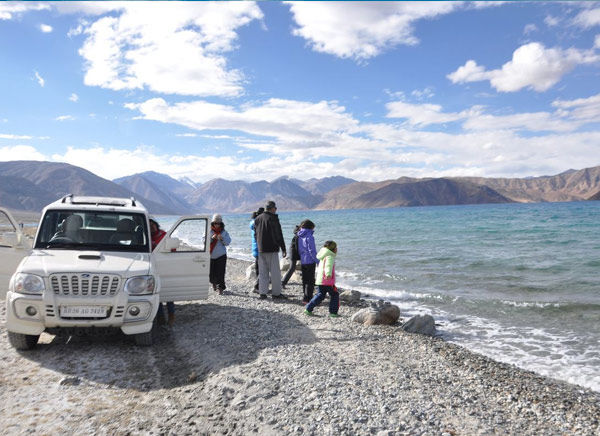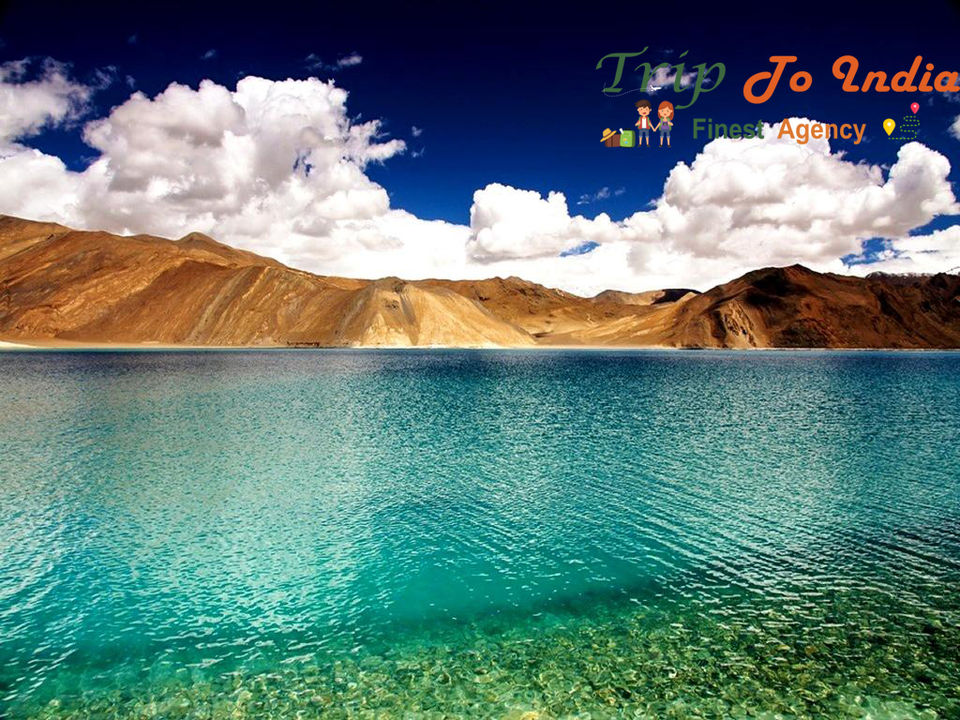Ladakh tour packagesPosted by priyanka on January 25th, 2020
As you sort through Ladakh tour packages, make sure you round up some of its popular monasteries, palaces and the old town in Leh. A proposed Union Territory (at the time of writing), much of Ladakh is over 9800 foot that stretches from the Himalayas into the Kunlun Ranges incorporating the fertile upper Indus River basin. After the contemporary borders were drawn up, the plateau of Ladakh came to be flanked by Tibet to the east, the vale of Jammu and Kashmir to the west, Lahaul and Spiti to the south and the Karakoram Pass of the Himalayas to the far north.  Little wonder, Ladakh turned into a landscape of barren, jagged peaks with picturesque gompas (Buddhist monasteries) perched precariously atop them. The prayer flags in primary colours fluttering alongside only make the all white dome-shaped stupas stand out in contrast. When the prayer wheel is rotated clockwise, it churns out chants that mingle with the passing wind and produce a melody that is as calming as it is haunting. Home to the monks robed in red, the insides of the gompas are a cheery departure from the stark, ochre and grey landscape in which it lies. Done up in a riot of colours with intricate murals and bright, golden-hued Buddhas, Ladakh is a piece of Tibet forgotten in time. Far from being cash-rich, Ladakh’s economy teaches a thing or two to the more commercial economies of the world. Despite living in rural mud-brick homes, an average Ladakhi is self-reliant for the tsampa or roast barley flour, the dairy (yak’s milk, cream and cheese) and the chhang or the barley beer that he locally produces. The region is primarily divided into two districts, Kargil and Leh with Kargil forming the Muslim majority, and Leh, Buddhist. While the former is an important stopover on your way from Srinagar to Leh and a port of entry into the Zanskar region, Leh it typically where the tourist activity is concentrated. Leh: It is perfectly common for travellers to look for Leh Ladakh tour packages because there are hardly so many places that are as tourist-friendly and breathtakingly beautiful as this mountainous district. Hemmed in by a spine of dagger-like ridges, Leh, lying on the Silk Route at 11,490 foot, is a town straight out of a picture book with mud-brick houses, narrow meandering lanes and an old bazaar at its heart. Also jostling for space are multiple hotels, souvenir shops, travel agencies and trekking companies that cater to its burgeoning tourist interest. In the long summer months, you can get around to most places within this old town on foot, though the same cannot be said about its harsh winter. Taking it easy at Leh is extremely critical to shed chances of a possible altitude sickness later on in the trip when you go on a trek to the higher reaches. The little agricultural hub of Changspa to the northwest of the city has several guesthouses to choose from. Venture deeper into the suburbs and you will enter a lush landscape of barley fields crisscrossed by narrow streams and winding footpaths that typically lead you into somebody’s charming garden home - bunch of them double up as economical guesthouses.
Sightseeing in Ladakh A Leh Ladakh trip is incomplete if you do not pay your respects at the various colourful gompas and palaces that surround it. Leh Palace: A dominant architectural edifice in Leh, the Leh Palace is considered to bear more than a passing resemblance to Tibet’s Potala Palace in Lhasa. Built in the 17th century under King Singge Namgyal, the structure has remained largely uninhabited since the downfall of Ladakh’s royals. Within the thick walls of the palace today is a small prayer room, a gallery to hold photo exhibitions, and a staircase leading to the rooftop for a bird’s eye view over Leh’s moon-like landscape. At the base of the structure is the iconic Namgyal Stupa, the Chandazik Gompa with a sweep of vibrant murals, the Soma Gompa, an erstwhile home of the monastery’s printing press. Spituk Gompa: Among best places to visit in Leh Ladakh is the Spituk Gompa at an elevation of 10,852 foot looking out over the Indus Valley. It is quite unbelievable to watch flights make a landing down below at the Leh airport. You can scale up the staircase to the exterior of the structure to the three-tiered shrine (latho) and the gonkhang believed to be the protector of the chapel. This chapel is home to the monastery’s presiding deities, though women travellers are forbidden from going inside. Once inside the main complex, you will see the most elaborate structure of the Skudung Lhakhang. Head into the old Tibetan prayer hall which has a statue of the founder of Gelukpa Buddhism, the Tsongkhapa. Explore the other ornate statues and find out their fascinating legends before winding up at the little canteen serving traditional Ladakhi tea, paba - a pea and barley meal, and tangtur curry - dip made of greens veggies and yoghurt. About 5 kilometre from central Leh, the gompa holds a festival in the last dates of January. Leh Old Town: Just beyond the Jamia Masjid in Leh are a labyrinthine of alleys, mud-brick stairways winding up and down old mud-brick houses and stupas that have seen better days. Welcome to the Old Town of Leh. The greatest thrill and charm here is to wind down its maze of alleys, see the old buildings - some have been restored incredibly well, a handsome set of 17th century structures that presently house the LAMO arts centre. Like it? Share it!More by this author |



